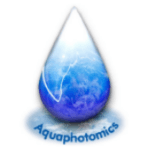
The development of non-destructive methods for early detection and understanding the mechanism of cold stress in plants is one of the very important aspects of crop breeding programs to which aquaphotomics research aims to contribute with new insights and solutions.
After many years of dedicated research in this area, we are proud to report that the first step towards this goal has been achieved. Our paper “Aquaphotomics Research of Cold Stress in Soybean Cultivars with Different Stress Tolerance Ability: Early Detection of Cold Stress Response” has been published this month in the Special Issue of Molecules journal, Aquaphotomics – Exploring Water Molecular Systems in Nature.
This paper is a product of joint efforts of our well known aquaphotomics team, Assist. Prof. Dr J. Muncan and Prof. Dr R. Tsenkova, and also pioneers of exploration of plant stress using aquaphotomics, Prof. Dr B.M.S. Jinendra and Prof. Dr S. Kuroki. Prof. Jinendra and Prof. Tsenkova authored the first aquaphotomics publication about early diagnosis of mosaic virus infection in soybean using aquaphotomics, more than 10 years ago, paving the way towards many other contributions in biotic stress diagnosis. Prof. Kuroki on the other hand, co-authored the first aquaphotomics paper which reported that the ability of the resurrection plants to survive very long periods without water are directly related to the water self-organization expressed as dynamic changes of water molecular structures in their leaves.
The newly published paper shows that with aquaphotomics, we were able to detect the effects of even very mild cold stress in soybean plants, in a completely non-destructive manner, and further on to even observe that soybean cultivars with different stress tolerance abilities could be distinguished. This paper is only the first one in the planed series of 3 papers, all of which explore the cold stress in soybean from different aspects, but in the future publications we will show how the genotypic differences are actually related to water molecular structure of the leaves resulting in different susceptibility of soybean cultivars to cold stress.
Stay with us and wait for more exciting discoveries in our next soybean publications.
Until then, we hope you will enjoy our first paper in this series and the incredible simplicity of early cold stress detection.

The paper can be found at the following webpages:
Abstract: https://www.mdpi.com/1420-3049/27/3/744
Full Text: https://www.mdpi.com/1420-3049/27/3/744/htm
